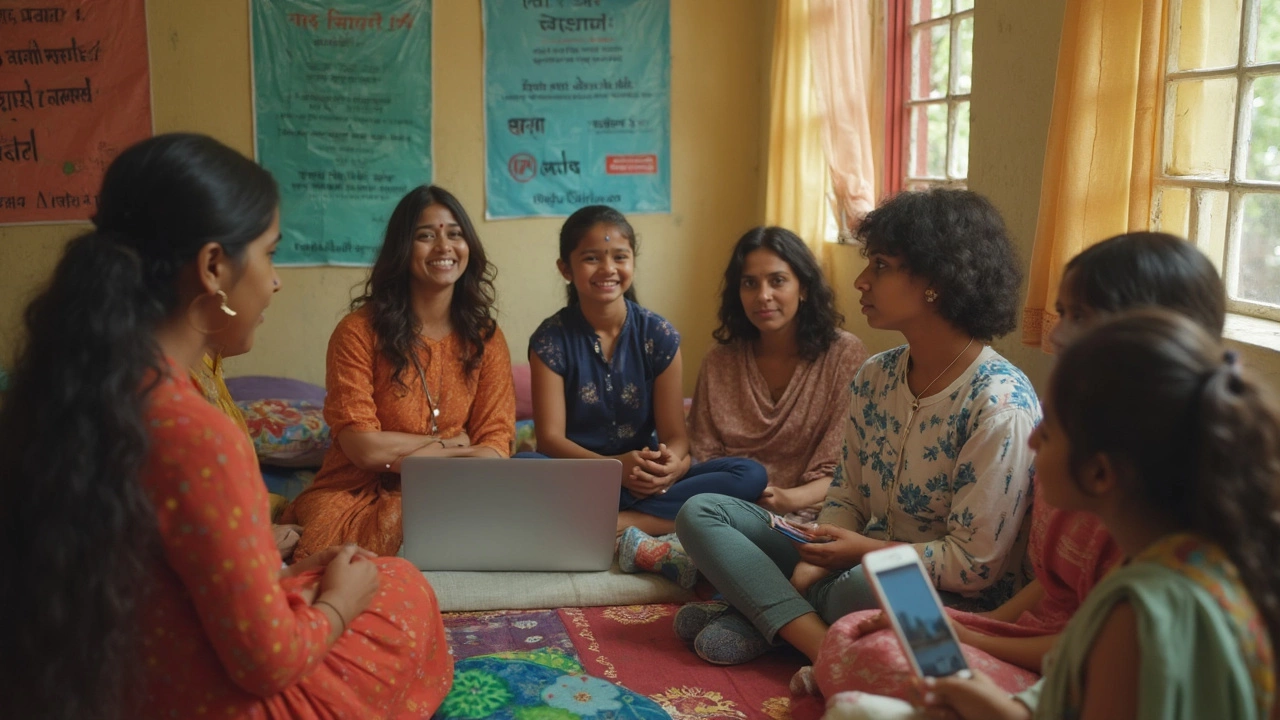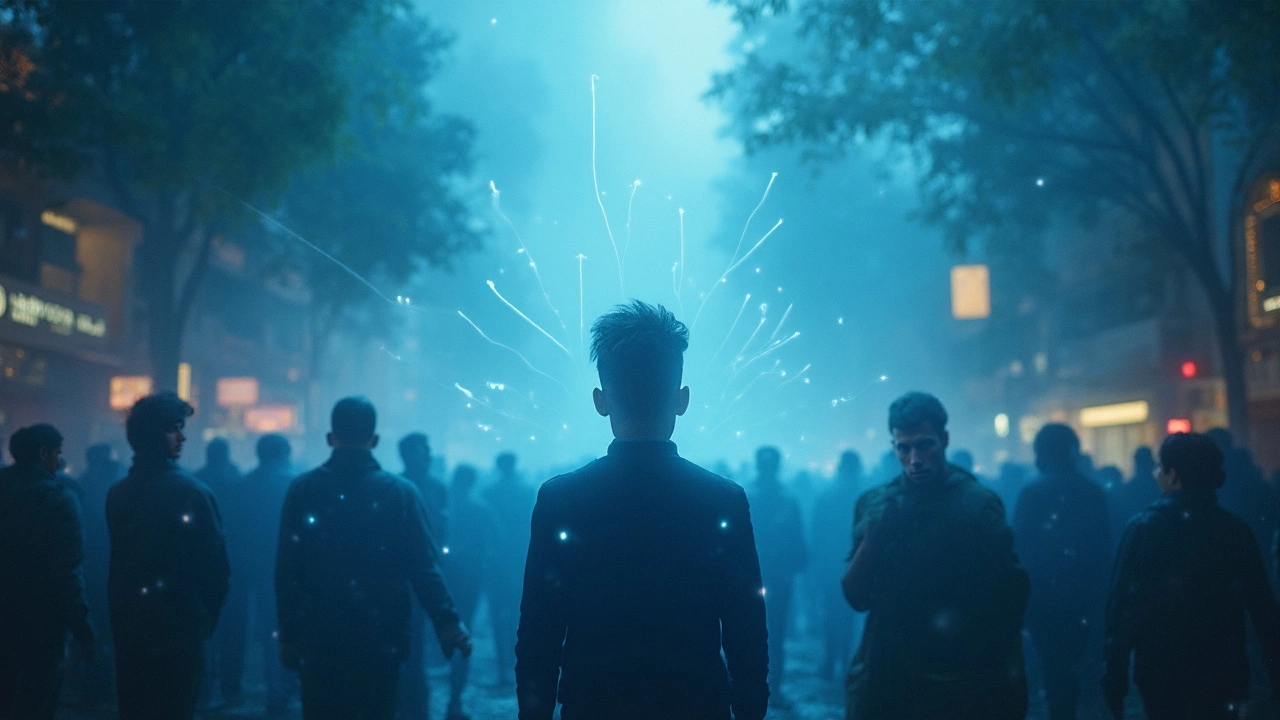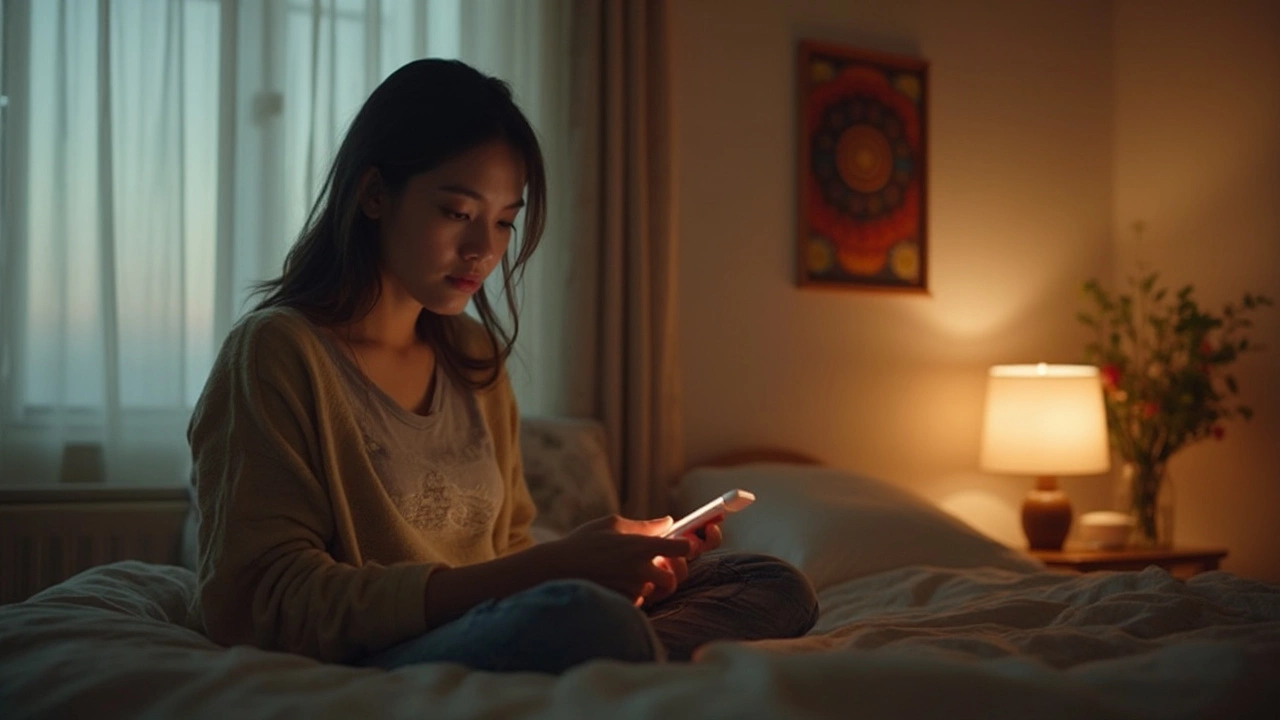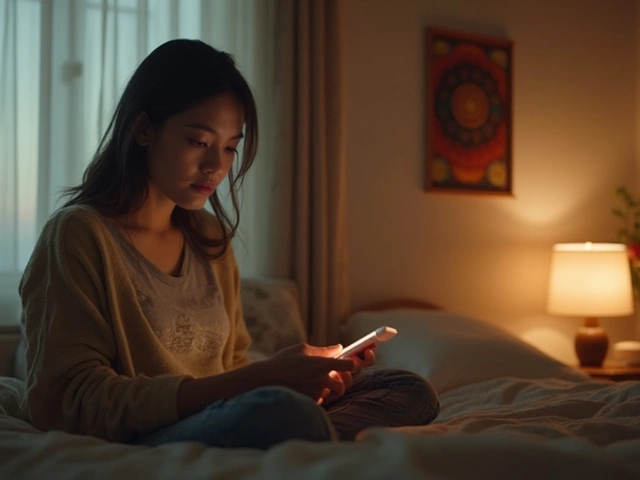Most people with depression don’t want to be alone, but let’s be real, opening up isn’t easy. So, the idea of a group chat—just texting or talking with people who actually get it—suddenly sounds like a lifeline. It takes away the awkward face-to-face pressure and lets you share what’s going on in your head without having to leave your own bed.
If you’re reading this hoping for a magic link to a depression group chat, I’ll cut to the chase: yes, they exist. You’ll find them on apps like Discord, Telegram, and even old school forums that have modern messaging features. Plenty of local mental health nonprofits run WhatsApp groups or closed Facebook chats for folks in the area. Sometimes, hospitals or community centers set these up as extensions of in-person support.
But before you dive in, not every group chat is actually run by mental health pros. Some are just regular people trying their best to help each other out. That can be amazing—or a little risky. It pays off to look for chats linked to legit organizations, like the National Alliance on Mental Illness (NAMI), Mental Health America, or your regional support network.
- Why Group Chats for Depression Exist
- What to Expect in Online Depression Support Chats
- Risks and Safety: Are These Chats Truly Helpful?
- How to Find Local In-Person Support Groups
- Smart Tips for Building a Support Network
Why Group Chats for Depression Exist
It’s not surprising that people with depression search for connection online—loneliness hits hard, and talking to someone who actually understands can help a lot. In fact, one survey by the Mental Health Foundation in the UK found that more than half of people dealing with depression say online conversations make them feel less isolated.
Group chats popped up because face-to-face meetings can be tough to schedule or even scary for some. A group chat breaks down barriers. You don’t have to show your face. You can read along, join in only when you want, or even lurk until you’re ready to talk. No pressure. It’s available 24/7, so even if you’re awake at 3 a.m., there’s a chance someone else is up and listening.
Here’s what makes these group chats different from just messaging a friend:
- You meet people from different backgrounds, all dealing with depression in their own ways.
- There’s less chance of judgment, because everyone’s been there at some point.
- Sharing resources, like helpful apps or local counselors, happens way more often in these chats.
- Some group chats are run by trained moderators or even therapists, which means conversations can stay safe and respectful.
So, these chats basically fill a major gap. They don’t replace therapy, but they do help people feel seen—especially if they’re not ready to talk openly with family or in-person groups yet.
What to Expect in Online Depression Support Chats
Jumping into an online support chat for depression can be weird at first. Most people worry about what to say or if others will even understand them. Good news: you don’t need to show up with a script or have all your feelings figured out. These chats are there so folks like you have a place to vent, ask questions, or just read along until you feel ready to chat.
In most of these chats, you’ll find people sharing their daily struggles, random thoughts, or things that worked for them. Chat groups usually have ground rules, like no hate speech, and some even have volunteer moderators checking that everyone’s safe and respected. If you’re lucky, you’ll get a group run by trained peers who know what it’s like—some, like those on 7 Cups or Depression Sanctuary, are even watched by staff to keep things on track.
Keep in mind, these chats run all day and night, and people come and go. Some nights might be quiet and other times it’s a flood of messages. Lurking—just reading without talking—is totally fine and pretty common, especially when you’re new.
Some practical stuff you might see in a typical chat:
- People sharing their worst days, but also the little wins.
- Advice on how to talk to friends or family about mental health.
- Info about medications, therapy, or where to find cheap or free help.
- Simple check-ins, like “How are you doing today?”
- Occasional group activities like gratitude posts or mindfulness tips.
If you want numbers, here’s a quick look at what’s out there, based on data from a 2024 survey by Mental Health America:
| Platform | Avg. Active Users (per week) | Moderators Present |
|---|---|---|
| 7 Cups | 42,000 | Yes |
| Depression Sanctuary (Discord) | 8,500 | Yes |
| Reddit r/depression chat | 19,000 | Sometimes |
| Local Facebook Groups | Varies (500-5,000 typical) | Varies |
Remember, these chats aren’t the same as therapy. They’re about peer support and shared experience, not clinical advice. Some days you might get fast responses, other days it’s slower. And if someone needs urgent help, group chat volunteers will usually send them hotline numbers or remind them to reach out for in-person support.

Risks and Safety: Are These Chats Truly Helpful?
Jumping into a group chat about depression feels good at first. It’s fast, anonymous, and takes just a few taps. But not all group chats are as safe or helpful as they seem. Some can actually add to your stress if you’re not careful. Before trusting a group with your story, it helps to know the real deal about the risks and what people have actually gone through.
First, if a chat isn’t run by mental health pros or a legit organization, you can run into keyboard warriors giving bad advice—or even trolls. Some people have shared horror stories about chats turning toxic or being flooded with fake accounts. If you see anything like someone sharing medical advice without being a doctor, or people pushing products or weird therapies, that’s a red flag. It’s also not rare to bump into privacy issues, especially on open platforms like Discord or public forums.
- Some chats have no moderators or have just one burnt-out volunteer trying to keep things positive—good intentions, but not enough control.
- The vibe can get heavy. In a 2023 survey, nearly 40% of people in depression chats said certain conversations made them feel worse, not better.
- If the chat is local, be careful with sharing details like where you live or who you are. Identity theft and scams aren’t as uncommon as you’d think.
Now, there’s real proof that online chats help some people. For example, a study by the University of Michigan in 2022 said folks using moderated online support chats felt 25% less isolated within a few weeks. But the same research found that groups with no ground rules sometimes triggered more anxiety symptoms than they relieved—especially for teens and young adults.
Here’s a handy comparison for common group chat risk factors:
| Chat Type | Chance of Unmoderated Content | Privacy Protection | Trusted Support Links |
|---|---|---|---|
| Unmoderated Discord | High | Low | No |
| Hospital/Nonprofit Chat | Low | Strong | Yes |
| Facebook Private Group | Medium | Okay | Sometimes |
If you want to try a group chat, stick with ones clearly linked to groups you trust or that have screening questions to join. Check if there are rules and who does the moderating. Trust your gut—if something feels off or if people start giving pushy advice, it’s fine to leave. Your health comes first. Always.
How to Find Local In-Person Support Groups
If you’re looking for face-to-face support, good news—there’s a bunch of practical ways to track these groups down. No need to feel lost or frustrated, let’s break it down so you actually walk away with options.
- Start with Your Local Hospital or Clinic: Most hospitals have resources for mental health. Ask your doctor or front desk staff if they know any depression support groups nearby. Some even host their own sessions on a weekly or monthly basis.
- Check National Organization Sites: Groups like NAMI (National Alliance on Mental Illness), Mental Health America, and Depression and Bipolar Support Alliance list in-person meetings on their websites. Type in your zip code and see what pops up.
- Call or Visit Community Centers: Town libraries, churches, and YMCAs often have bulletin boards loaded with flyers about group meetings. Even if you’ve never stepped foot inside, they’re happy to share info.
- Use Search Tools: The Psychology Today ‘Find a Support Group’ tool is a lifesaver. Plug in your location, filter by ‘depression,’ and you’ll see what’s available around you. Meetup.com can also surprise you with local mental health hangouts.
- Ask at Work or School: Many workplaces and college campuses offer mental health resources, but you might have to ask HR or a counselor to point you in the right direction.
Just so you have an idea of how common these groups are, check out this snapshot of resources:
| Resource | How to Access | Estimated Number of Meetings (US) |
|---|---|---|
| NAMI Support Groups | nami.org & Local Chapters | 7,000+ |
| Depression and Bipolar Support Alliance (DBSA) | dbsalliance.org | 1,500+ |
| Mental Health America Affiliates | mhanational.org/affiliates | 200+ locations |
Here’s one more pro tip: When you find a group, it’s okay to message the organizer with questions before you show up. Want to know how big the group is, how strict they are about privacy, or if you just sit and listen at first? Ask. Everyone remembers what it’s like to be new.
Bottom line—finding an in-person support group for depression takes a little digging, but the payoff is huge. One real conversation in person can sometimes do more than a week of texts in a group chat. If you want to feel less alone, this is a legit way to start.

Smart Tips for Building a Support Network
Trying to handle depression alone is rough, but building a support network doesn’t have to be overwhelming. You don’t need a huge circle—just a few solid connections that get what you’re dealing with. Here’s how you can actually make that happen, even if you’re starting from zero.
- Start small and local: Joining a local support group, even one that’s online, is an easy way to find people right in your area. Many folks say that talking with people from your own town or city makes things feel more real and less intimidating. Check your city’s community website or ask your doctor or counselor for group recommendations.
- Be picky about your group: Not all chats or support groups give off the same vibe. Sit in for a few sessions before jumping in with your story. If something feels off (too much negativity or people giving out sketchy advice), trust your gut and try another group.
- Mix online and offline connections: It’s easy to text in a group chat, but in-person or video meetups can help you feel more connected. Hybrid support is becoming more common—the National Alliance on Mental Illness reports that around 75% of local groups now offer both online and in-person options.
- Keep it safe: Always protect your privacy. Don’t share things like your last name, address, or other personal details in big chats. Stick to groups backed by trusted organizations or hospitals when possible.
If you want an easy script for reaching out, start with something simple like, “Hey, I’m looking for support. Does anyone here have tips for new members?” You’ll be surprised how many people jump in to help.
"There’s nothing weak about seeking support—having people to talk to is a sign of strength, not failure." — Dr. Jesse Matthews, licensed psychologist, quoted in Psych Central.
Here’s a quick look at how common different kinds of support networks are in the U.S.:
| Support Type | % of People Using |
|---|---|
| Online group chats | 41% |
| In-person local groups | 36% |
| Text-based hotlines/apps | 28% |
| Friends or family networks | 63% |
Don’t forget: building your own support network doesn’t happen overnight. If a depression group chat doesn’t fit your needs right away, keep experimenting until you find your crew. Sometimes your best support will come from places you didn’t expect.





